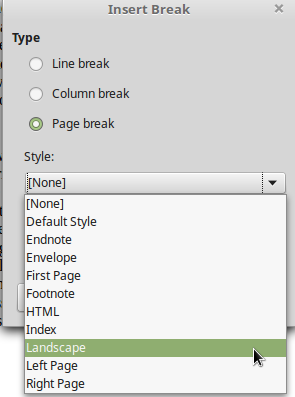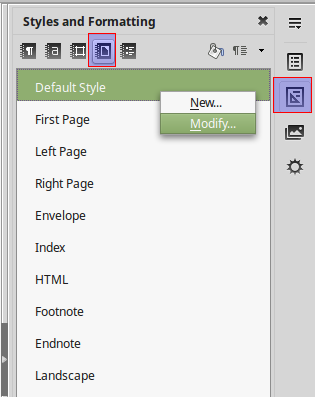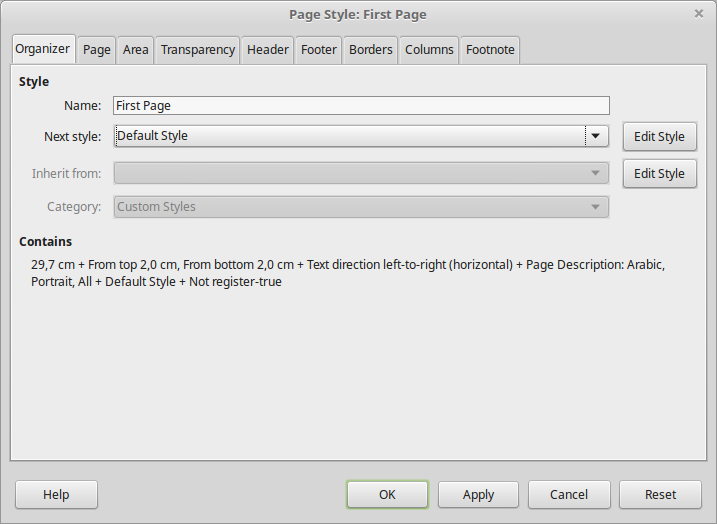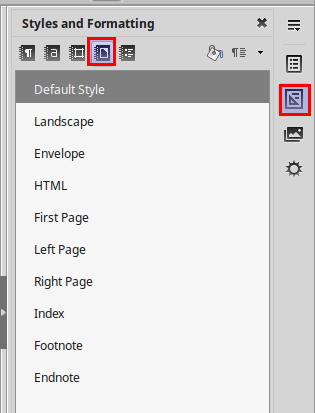Page Styles
Page Styles
Page styles control page properties (margins, page size, header and footer, among others). However, unlike paragraphs, which can have directly applied properties, pages only have a page style and no directly applied properties. Furthermore changing a page style may cause the style of subsequent pages to change as well. This is because page styles are applied to sections of a document and not on individual pages. To change the style of only one page or part of a document you need to insert a manual page break, as described below.
How page styles are used
Using page styles you can create documents that have pages with independent formating. For example a first page with an empty footer and all subsequent pages having a footer with page numbering. Another example is when you may need to insert a page with special formatting, for example a landscape page or a page with more columns. As shown in the example below you need to insert page breaks in order to apply page styles.

Insert a manual break
To create a new page and apply a page style you need to insert a manual break
- Choose Insert > Manual Break.
- Select the desired page style (say, Landscape) in the Insert Break dialog.

- Fill in the contents for this page. Then insert another page break.
- Then select Default Style again. The pagination continues on as normal, except that one page has been replaced by a different page style.
Modify a page break
If you decide later to edit the page style for a manual page break you can use the Paragraph properties window
- Place the cursor on the start of the page
- Right click and choose Paragraph from the context menu
- Enable With page style option and choose the page style

Modify a page style
To modify a page style:
- Open the page Styles and Formatting window tab from the Sidebar
- Right click on any of the available page style you want to modify

This command will open the Page Style window. Navigate through the tabs to view or change page properties.

The next style property
An important property of a page style is the Next style property which defines the style of the next page. In the previous example the First Page style has the Default Style as it's next property. This means that subsequent pages will revert to the default style and there is no need for a manual page break. However page styles that have the next style set to themselves need a page break in order to "break" or change this style.
Creating page styles
To process of creating a custom page style is similar to modifying one. To create a new page style:
- Open the page Styles and Formatting window tab from the Sidebar
- Right click on the style where the new style will inherit properties (for example the Default Style)
- Choose New from the context menu.
- Set the style name, next style and page properties in the Page style window.

Applying page styles
To apply a page style, place the cursor anywhere on the page to which the style should be applied. You can easily check which page style is applied because it is shown on the status bar. If you want to apply a different style, you can open the Styles and Formatting window, select the page style icon at the top of the window, and then double-click on the desired style.

Changing a page style may cause the style of subsequent pages to change as well. The results may not be what you want. To change the style of only one page, you may need to insert a manual page break, as described above.